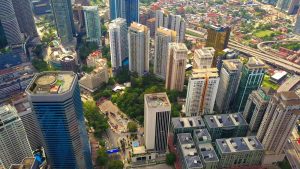Every five years, the Malaysian government issues a new development plan. It identifies economic priority areas, establishes goals, and discusses pathways for achieving them within the next five years. We are now on the Twelfth Plan, which was unveiled last week. As Alifah Zainuddin pointed out in The Diplomat, much of the content is aspirational, peppered with buzzwords like “whole-of-government approach” and references to “Industrial Revolution 4.0.” The growth that is envisioned is invariably sustainable, inclusive, and holistic, and statements are often too vague to be meaningful.
Documents like this are best read as a kind of broad philosophical statement about the direction the government wants the economy to move over the next five years. And the Twelfth Plan is pretty clear: it wants to boost wages and consumption and private investment, close developmental gaps between regions, increase productivity, improve connectivity (physical and digital), invest in human capital, and move into higher value-added manufacturing like aerospace and pharmaceuticals. That all sounds great. In fact, it’s basically what every middle-income economy is constantly trying to do all of the time. The hard part is actually doing it.
The Twelfth Plan contains headline benchmarks to be attained by 2025, such as annual GDP growth of at least 4.5 percent. Like all such projections, these are essentially guesses and whether they are met or not has as much to do with luck as it does with policy. But if we drill down into some of the more detailed proposals, the plan does reveal interesting things about the structure of Malaysia’s political economy and how policy-makers hope it will evolve in the coming years.
The plan identifies four main “policy enablers” that will push the economy toward the desired structural changes: developing human capital, adopting new technologies, enhancing connectivity and infrastructure, and strengthening public service. As far as I can tell, the public service aspect seems pretty tacked-on and boilerplate, so I will focus on the first three.
Broadly speaking, the government wants a domestic labor pool with a level of skill and education that can command higher wages and attract investment in high-tech, high value-added industries. They want to move the economy away from an overreliance on commodity exports as well as low-productivity, labor-intensive manufacturing. This will, in theory, transfer a larger share of GDP to workers and thus boost consumption and private investment which is the real goal of all this.
Upskilling the workforce and investing in education are notoriously tricky policy objectives, however. What skills exactly are needed in a competitive workforce these days? How do you measure educational outcomes? What role should foreign workers play in this mix? What is a fair wage for a particular skill and who determines that? There are no single, objectively correct answers for any of these questions and so it’s no surprise that the Twelfth Plan doesn’t really offer any.
In addition to investment in human capital, the other policy drivers focus on more tangible things like quicker adoption of technology and investment in connectivity. These are more traditional engines of growth, simpler to conceptualize, and the results easier to measure. This part of the plan involves expanding access to broadband, investing more heavily in R&D (especially technologies with commercial potential), improving transport infrastructure and logistics, and making e-commerce a more central part of the economy.
My reading of the Twelfth Plan is that Malaysian policymakers want to rebalance the economy away form export-led growth, with a larger share of GDP going toward wages and consumption and with a beefier role for private investment. To achieve this they are invoking somewhat vague ideas about technology, the digital economy, and upskilling the workforce. Meanwhile, much of the plan still focuses on improving logistical and transport networks which are pretty squarely aimed at making trade more efficient. There’s nothing wrong with that, trade being an essential part of any robust economy, but the real thing to watch for is not so much the grab bag of ideas and benchmarks being tossed out in the plan, but rather how these competing ambitions balance out over the next five years.
































